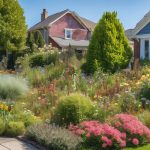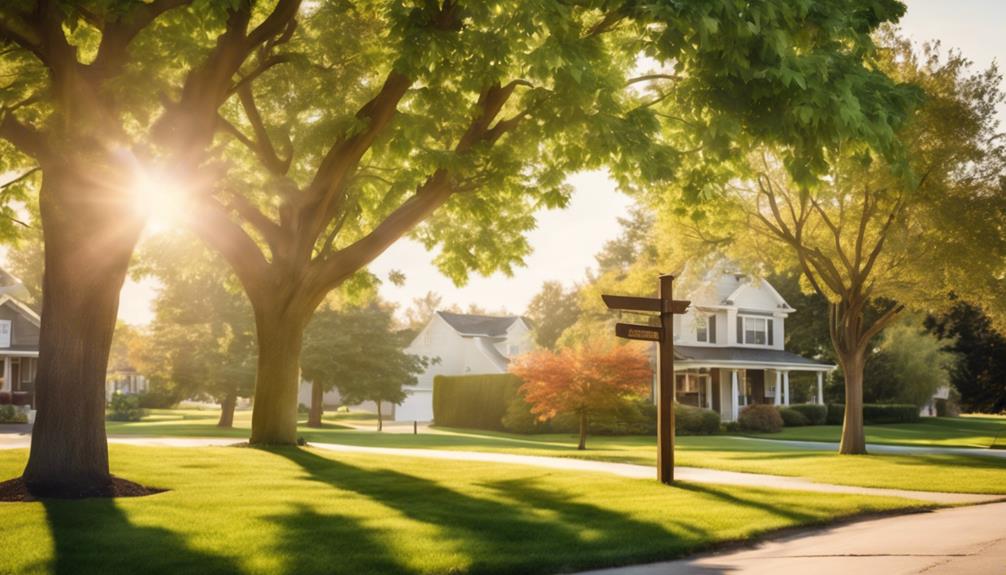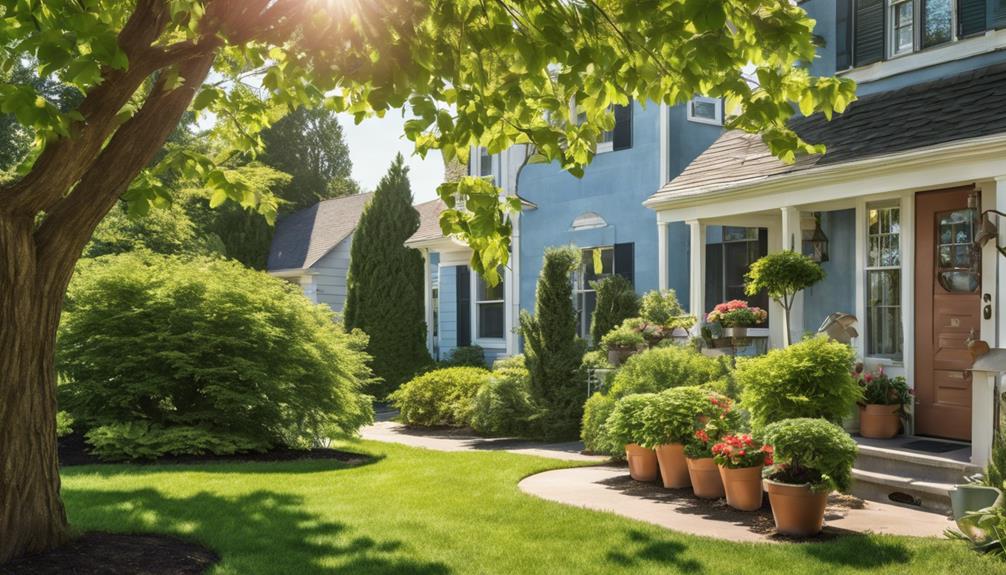
7 Best Mistakes to Avoid in Garden Maintenance
3 October 2024
Top Tree Trimming Services for Homeowners
4 October 2024To find affordable local tree care services, consider these practical tips.
Start by researching different providers and comparing their services and pricing. Seeking recommendations from your community can uncover reliable options.
Furthermore, take advantage of seasonal discounts and negotiate for better prices. Bundling services together often leads to cost savings.
Engaging in DIY maintenance, such as regular inspections and pruning, can mitigate expenses while promoting tree health.
Finally, selecting qualified arborists ensures you receive expert care tailored to your trees' needs.
For further insights on effective tree care strategies, investigate additional ideas and tips.
Affordable Tree Care Options
When considering affordable tree care options, community tree care programmes can provide invaluable resources and support for residents.
Furthermore, implementing DIY tree maintenance tips can empower homeowners to effectively manage their trees while minimising costs.
Together, these strategies create accessible pathways for maintaining healthy and vibrant landscapes.
Community Tree Care Programs
Community tree care programmes offer residents an accessible and cost-effective way to maintain and enhance their local green spaces.
These initiatives often provide resources such as expert guidance, volunteer opportunities, and educational workshops aimed at fostering a deeper understanding of tree health and maintenance.
By partnering with local governments, non-profit organisations, and environmental groups, these programmes can facilitate tree planting, pruning, and disease management efforts at minimal or no cost to participants.
Furthermore, they encourage community engagement and stewardship, creating a collective responsibility for maintaining urban forestry.
Residents benefit not only from the improvement of their surroundings but also from increased property values and enhanced air quality.
Engaging in such programmes cultivates a sustainable environment for future generations.
DIY Tree Maintenance Tips
A variety of DIY tree maintenance tips can empower homeowners to care for their trees effectively while keeping costs low.
Begin by regularly inspecting your trees for signs of disease or pest infestations, such as discoloured leaves or unusual growth patterns.
Pruning is vital; use clean, sharp tools to remove dead or crossing branches, promoting healthy growth and airflow.
Mulching around the base provides nutrients and retains moisture, while ensuring the mulch does not touch the trunk to prevent rot.
Watering deeply, especially during dry spells, encourages strong root development.
Finally, consider applying organic fertilisers to improve soil health.
Selecting Qualified Arborists
Selecting qualified arborists is vital for effective tree care, as their experience with local species directly impacts tree health.
A knowledgeable arborist will understand the specific needs of your region's flora and can offer tailored, cost-effective service plans.
Prioritising these qualifications guarantees that your investment in tree maintenance yields optimal results.
Experience With Local Species
Understanding the unique characteristics of local tree species is essential for effective tree care, making the selection of qualified arborists a critical decision for homeowners.
An arborist's familiarity with native species can greatly influence the health and longevity of your trees. When evaluating potential arborists, consider the following factors:
- Knowledge of Local Flora: Proficiency in the growth patterns and needs of native trees.
- Experience with Local Pests: Awareness of regional pests that may threaten tree health.
- Understanding of Soil Conditions: Insight into local soil types and their impact on tree growth.
- Practical Pruning Techniques: Mastery of species-specific pruning methods to promote healthy growth.
Selecting an arborist with expertise in local species guarantees tailored care and fosters sustainable tree health.
Local Tree Health Knowledge
In relation to maintaining the health of your trees, the expertise of a qualified arborist is invaluable. Selecting the right professional can significantly impact the longevity and vitality of your trees.
When evaluating potential arborists, consider the following criteria:
- Certification and Credentials: Confirm they hold relevant certifications, such as ISA (International Society of Arboriculture) accreditation.
- Local Knowledge: Familiarity with native species and local pests enhances their ability to address specific concerns.
- Experience: Look for a proven track record in tree care, particularly in your region's unique climate.
- References and Reviews: Seek testimonials from past clients to assess satisfaction and effectiveness.
Investing time in selecting a qualified arborist will yield benefits in maintaining the health and beauty of your trees.
Cost-Effective Service Plans
Affordability is a crucial consideration when navigating the landscape of tree care services. Selecting qualified arborists can significantly enhance the longevity and health of your trees while ensuring cost-effectiveness.
When researching potential service plans, consider the following:
- Certifications: Verify that the arborist holds relevant qualifications and licenses.
- Experience: Look for professionals with a strong history of successful tree care projects.
- Comprehensive Assessments: Ensure they provide thorough evaluations to ascertain the specific needs of your trees.
- Transparent Pricing: Seek out clear cost structures, including potential discounts for bundled services.
Actionable Tree Care Strategies
Effective tree care begins with a thorough initial tree assessment checklist, which helps identify the specific needs and conditions of each tree.
Incorporating mulching for moisture retention and pruning for structural integrity are crucial strategies that promote healthy growth and longevity.
Initial Tree Assessment Checklist
Conducting a thorough initial tree assessment is crucial for identifying the health and stability of your trees, enabling informed care decisions.
This process not only helps in recognising potential issues but also guides you in selecting appropriate maintenance strategies.
Consider the following checklist during your assessment:
- Tree Structure: Inspect for lean, dead branches, or signs of decay.
- Foliage Condition: Evaluate leaf size, colour, and density for signs of distress.
- Root System: Check for exposed roots, soil compaction, or fungal growth.
- Pest and Disease Presence: Look for unusual blemishes, holes, or insect activity on leaves and bark.
Mulching for Moisture Retention
While many factors contribute to the health of trees, mulching stands out as a crucial strategy for improving moisture retention in the soil. By applying a layer of organic material around the base of trees, you can create a conducive environment that conserves moisture and reduces evaporation.
This practice not only supports the tree's hydration needs but also promotes soil health and suppresses weed growth.
- Encourages deeper root growth
- Regulates soil temperature
- Improves nutrient availability
- Reduces soil erosion
Selecting the right type of mulch, such as wood chips or bark, and applying it at the appropriate depth—typically 5-10 centimetres—will optimise these benefits.
Regularly monitoring and replenishing mulch can lead to thriving trees, even in challenging conditions.
Pruning for Structural Integrity
Pruning is essential for maintaining the structural integrity of trees, as it helps shape their growth and remove any weak or diseased branches.
Proper pruning techniques not only improve the aesthetic appeal of trees but also reduce the risk of damage from storms and pests.
To master pruning for structural integrity, consider the following strategies:
- Assess the tree's natural shape before cutting.
- Remove crossing branches to prevent wounds and promote air circulation.
- Focus on the removal of one-third of the tree's total foliage at a time to minimise stress.
- Regularly prune during the dormant season to encourage healthy regrowth.
Improved Property Aesthetics
A well-maintained landscape can significantly enhance the overall aesthetics of a property, making it more inviting and visually appealing. Trees play a crucial role in achieving this enhancement, contributing to the harmonious balance of outdoor spaces. Regular tree care, including pruning, can accentuate the natural beauty of your landscape, promoting optimal growth and flourishing foliage.
| Aspect | Benefits | Tips |
|---|---|---|
| Tree Health | Enhanced growth and vitality | Conduct regular inspections |
| Visual Appeal | Improved curb appeal | Select complementary species |
| Environmental Impact | Shade and air purification | Incorporate native varieties |
| Property Value | Increased market value | Ensure professional maintenance |
Investing in tree care services ultimately transforms your landscape into a picturesque environment that reflects your commitment to property maintenance.
Sustainable Pest Management Techniques
Sustainable pest management techniques are vital for maintaining healthy trees while minimising environmental impact.
Methods such as natural insect repellent sprays, beneficial nematode treatments, and neem oil pest treatments offer effective solutions for managing pests without harmful chemicals.
Implementing these practices not only protects the ecosystem but also ensures the long-term health of your trees.
Natural Insect Repellent Sprays
In the realm of maintaining a healthy garden or landscape, utilising natural insect repellent sprays provides an eco-friendly alternative to chemical pesticides.
These sprays not only protect your plants but also contribute to the overall well-being of the ecosystem. By employing sustainable pest management techniques, you can effectively deter harmful insects while promoting beneficial ones.
- Made from essential oils, such as neem or peppermint
- Non-toxic to humans, pets, and beneficial insects
- Biodegradable and environmentally friendly
- Cost-effective and easy to prepare at home
Implementing natural insect repellent sprays in your tree care regimen can enhance your gardening practices.
As you master these techniques, you foster a thriving landscape that harmonises with nature, preserving both beauty and biodiversity.
Beneficial Nematode Treatments
Beneficial nematode treatments represent an effective and environmentally friendly approach to pest management in landscapes and gardens.
These microscopic roundworms target and control harmful pests, such as grubs and root weevils, without harming beneficial insects or plants.
By integrating beneficial nematodes into your pest management strategy, you can foster a healthier ecosystem while reducing reliance on chemical pesticides.
- Targeted action against specific pests
- Minimal environmental impact
- Promotes soil health and biodiversity
- Safe for pets and humans
Implementing beneficial nematode treatments not only improves the health of your landscape but also aligns with sustainable practices that promote long-term ecological balance.
As you investigate affordable local tree care services, consider incorporating this innovative technique for lasting results.
Neem Oil Pest Treatment
Neem oil pest treatment is a powerful and eco-friendly solution for managing a variety of garden and landscape pests. Extracted from the seeds of the neem tree, this natural insecticide targets pests while being safe for beneficial insects when used correctly.
- Effective against aphids, spider mites, and whiteflies
- Disrupts the life cycle of pests, reducing future infestations
- Biodegradable and non-toxic to humans and pets
- Improves plant health by promoting resilience against stress
Utilising neem oil as part of an integrated pest management strategy can lead to sustainable outcomes.
Its multifaceted properties not only control pests but also foster an environment conducive to thriving plants, embodying an advanced understanding of horticultural practices.
Tree Disease Identification Issues
Tree disease identification poses significant challenges, primarily due to insufficient knowledge among tree care providers and homeowners alike.
The lack of affordable diagnostic services further complicates the ability to accurately assess and treat tree health issues.
However, exploring cost-effective diagnostic testing options can empower individuals to take proactive measures in maintaining the health of their trees.
Inadequate Tree Disease Knowledge
Understanding the complexities of tree diseases is crucial for maintaining healthy landscapes; however, many local tree care services struggle with inadequate knowledge in this area.
This deficiency can lead to misdiagnosis, ineffective treatments, and ultimately, the decline of valuable trees.
- Limited familiarity with common tree diseases
- Inability to differentiate between similar symptoms
- Lack of updated training on emerging threats
- Insufficient understanding of tree biology and ecology
To ensure effective tree care, both homeowners and service providers must prioritise ongoing education in tree disease identification.
A well-informed workforce is fundamental for implementing appropriate interventions that can save trees from serious ailments, thereby enhancing the overall health of our urban environments.
Lack of Affordable Diagnostics
Many homeowners encounter difficulties in diagnosing tree diseases due to the lack of affordable diagnostic services. This situation not only hampers effective tree care but can also lead to irreversible damage.
The barriers to access are numerous:
- High Costs: Many diagnostic services are prohibitively expensive, limiting options for the average homeowner.
- Limited Availability: Qualified tree care professionals may be scarce in certain regions, further complicating the issue.
- Lack of Awareness: Homeowners often underestimate the importance of timely diagnostics, resulting in delayed treatment.
- Complexity of Diseases: The diverse range of potential tree ailments requires specialised knowledge that is often financially out of reach.
Addressing these issues is vital for promoting healthier trees and enhancing community landscaping.
Affordable Diagnostic Testing Options
Access to affordable diagnostic testing options is vital for homeowners seeking to identify tree diseases effectively.
Early detection is critical in preserving the health of trees and preventing further damage. Here are some accessible options to consider:
- Local Cooperative Extension Services: Often provide free or low-cost diagnostic services.
- University Plant Clinics: Many universities offer expert analysis at minimal fees.
- Community Workshops: Participate in workshops that educate on tree health and disease identification techniques.
- Mobile Apps: Utilise technology for preliminary assessments of tree health through diagnostic apps.
Why Choose TKL Birmingham Gardener
Choosing the right gardener can significantly impact the health and aesthetics of your outdoor space, and TKL Birmingham Gardener stands out as a premier choice for local tree care services.
With a commitment to excellence, TKL employs certified arborists who possess extensive knowledge and expertise in tree maintenance. Their wide range of services includes pruning, disease management, and soil improvement, ensuring that each tree flourishes in its environment.
Furthermore, TKL Birmingham Gardener prioritises sustainable practices, utilising eco-friendly methods that promote biodiversity and soil health.
Their transparent pricing model guarantees affordability without compromising quality, empowering homeowners to make informed decisions.
Common Tree Care Questions
Homeowners often have a multitude of questions regarding tree care, as understanding the needs of trees is fundamental for their health and longevity.
Common inquiries include the ideal frequency of pruning, which varies by species and maturity, and the best times for such maintenance.
Furthermore, homeowners frequently seek guidance on recognising signs of disease or pest infestations, including wilting leaves or unusual growth patterns.
Questions about soil quality and fertilisation are also prevalent, as the right nutrients are vital for robust tree development.
Ultimately, many are concerned with the correct methods for watering, particularly during dry spells.
Addressing these common tree care questions fosters an environment where trees can thrive, enhancing both property value and ecological balance.
Future Tree Care Planning
Effective future tree care planning is essential for maintaining the health and vigour of trees in any landscape.
A well-structured plan not only enhances the aesthetic appeal but also ensures the longevity and resilience of your trees.
Key components of an effective tree care strategy include:
- Regular Health Assessments: Schedule periodic evaluations to identify potential issues early on.
- Species-Specific Care: Tailor care routines based on the unique requirements of different tree species.
- Soil and Nutrient Management: Monitor soil health and provide necessary amendments to support growth.
- Pruning and Maintenance Schedule: Establish a timeline for pruning to improve structure and promote air circulation.




